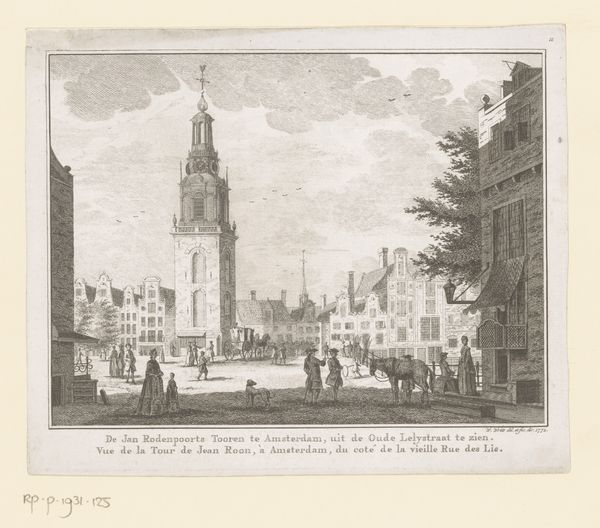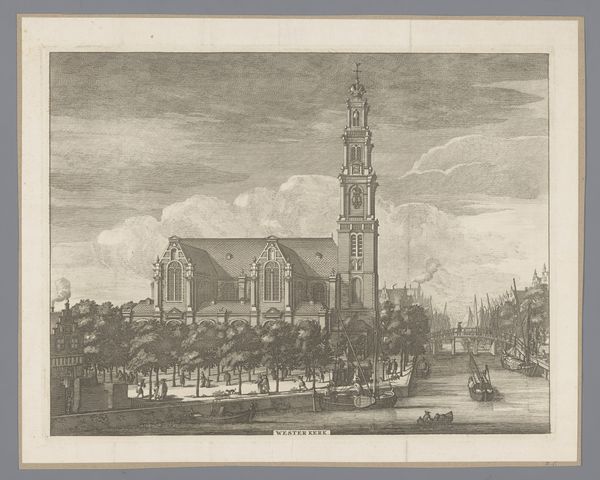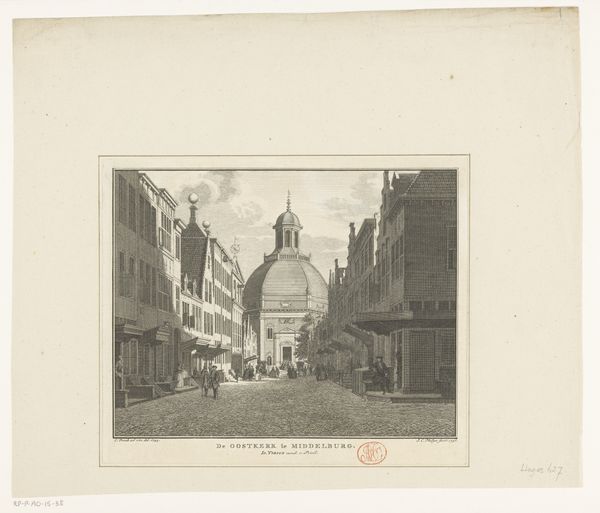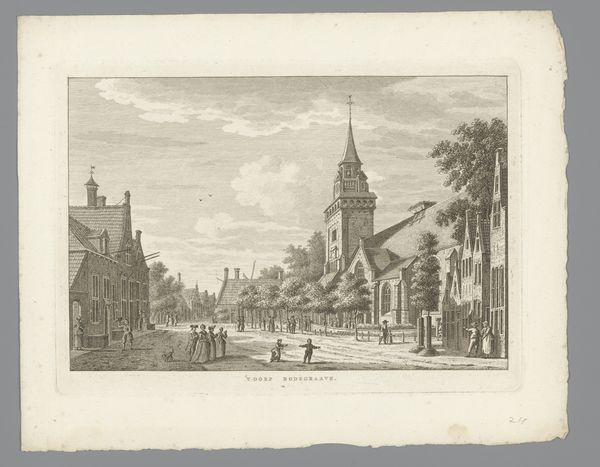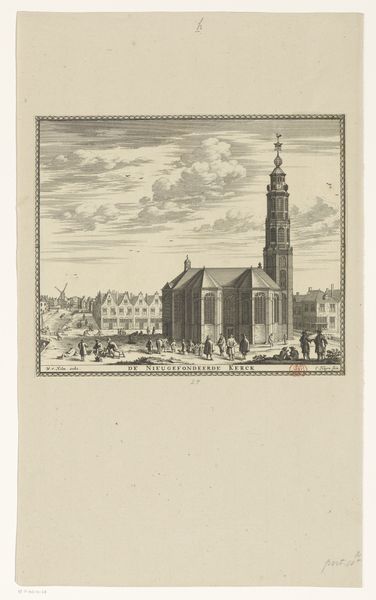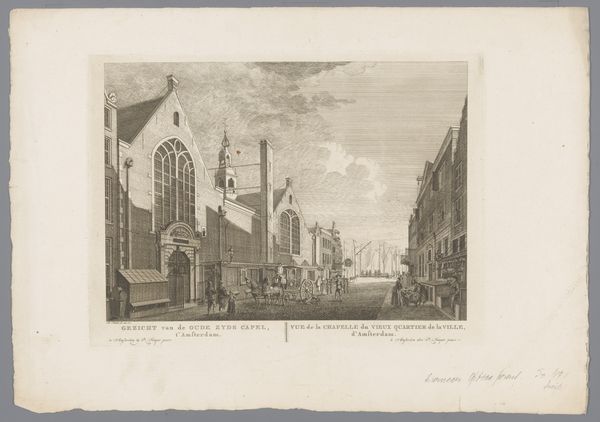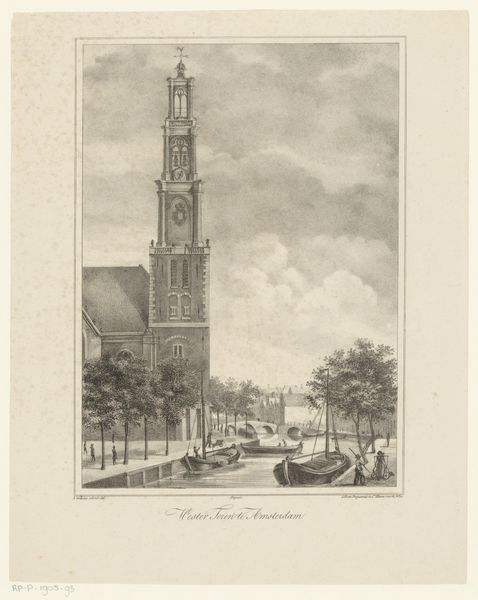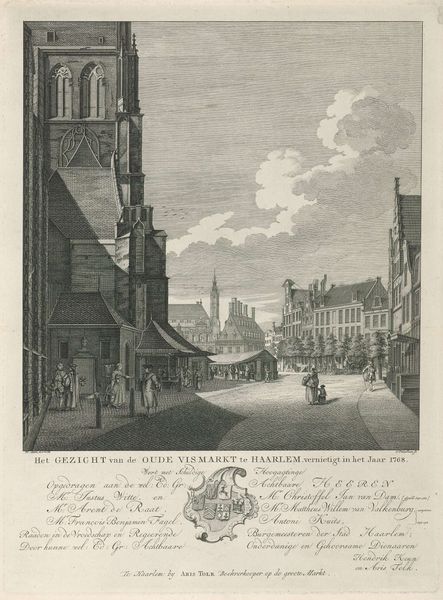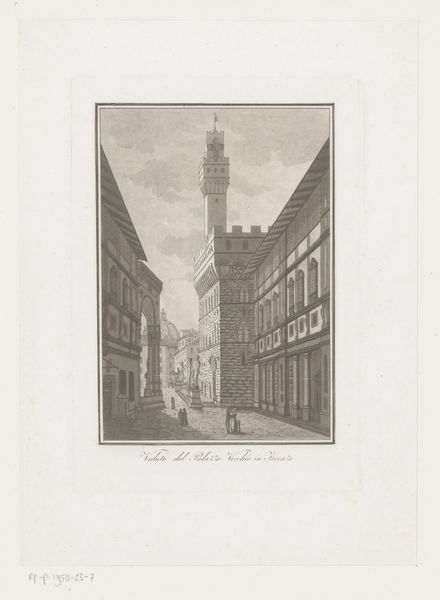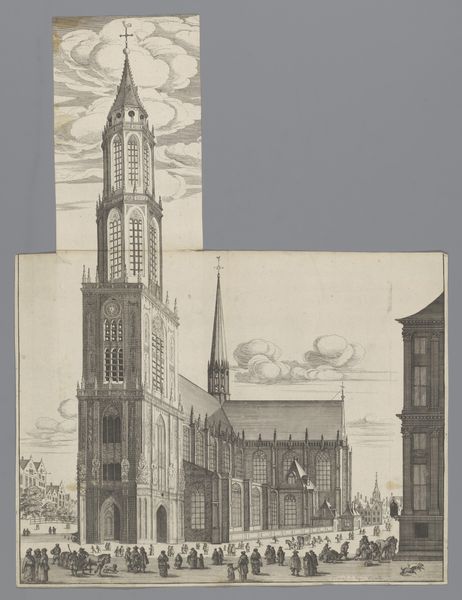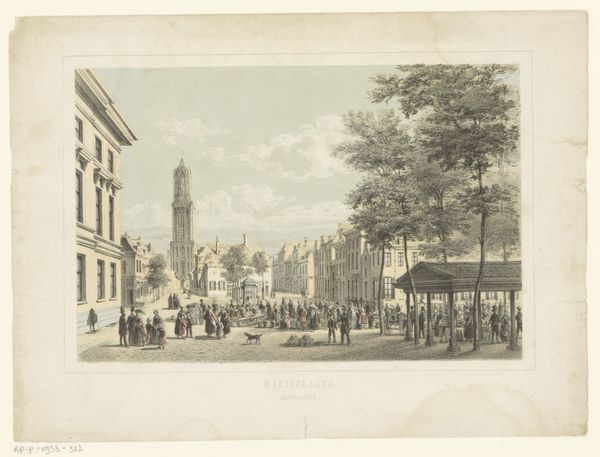
aquatint, print, engraving
#
aquatint
# print
#
landscape
#
cityscape
#
history-painting
#
engraving
Dimensions: 292 mm (height) x 218 mm (width) (plademaal)
Editor: We’re looking at "Vor Frelser Kirke på Christianshavn," an aquatint and engraving print by Jens Peter Lund from the mid-19th century. I’m really struck by how the imposing architecture seems to dwarf the figures on the street. How would you interpret this portrayal of Copenhagen's cityscape, placing the church in such prominence? Curator: It's crucial to view this work within the context of 19th-century Denmark, a period of intense national romanticism. How do you think the imposing scale of the church, rendered meticulously through engraving and aquatint, contributes to the construction of a national identity? Is it about religion or national pride? Editor: I suppose it could be both? The church could be a symbol of a united Denmark. Was there a push from the cultural or political elite to have art reinforce these ideas? Curator: Precisely. Consider the role of the Danish Royal Academy and institutions like the Statens Museum for Kunst, where this print resides. They were instrumental in shaping artistic tastes and promoting images that reinforced the nation’s cultural heritage. The seemingly objective rendering of the cityscape serves to legitimize and naturalize the dominance of specific institutions, in this case, the church, within the social fabric. How effective do you think this kind of visual propaganda could be? Editor: I hadn’t thought about it as propaganda. But framing the image this way makes me realize how deliberate the choice of perspective and detail really is, subtly imposing ideas about national identity and institutional power. Curator: Exactly. It underscores the public role of art and how deeply intertwined artistic representation is with the politics of imagery. Next time you see a cityscape, consider who and what is emphasized, and to what end? Editor: I will. It is more than a snapshot of history; it actively constructs the way we perceive it. Thanks.
Comments
No comments
Be the first to comment and join the conversation on the ultimate creative platform.
